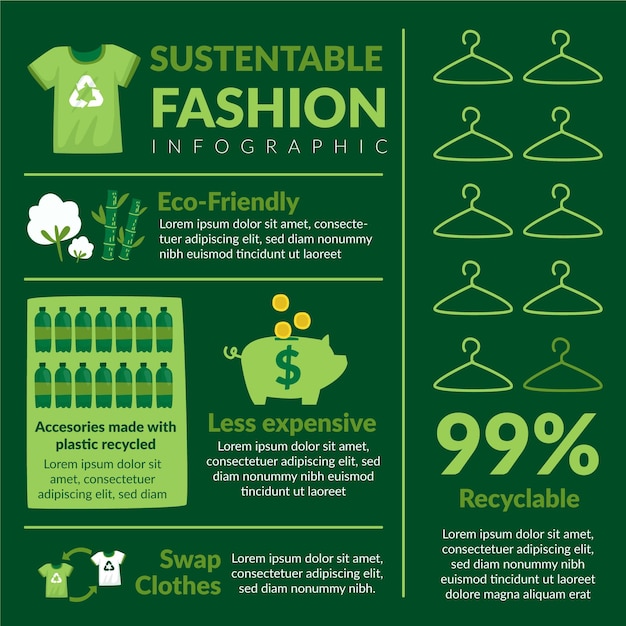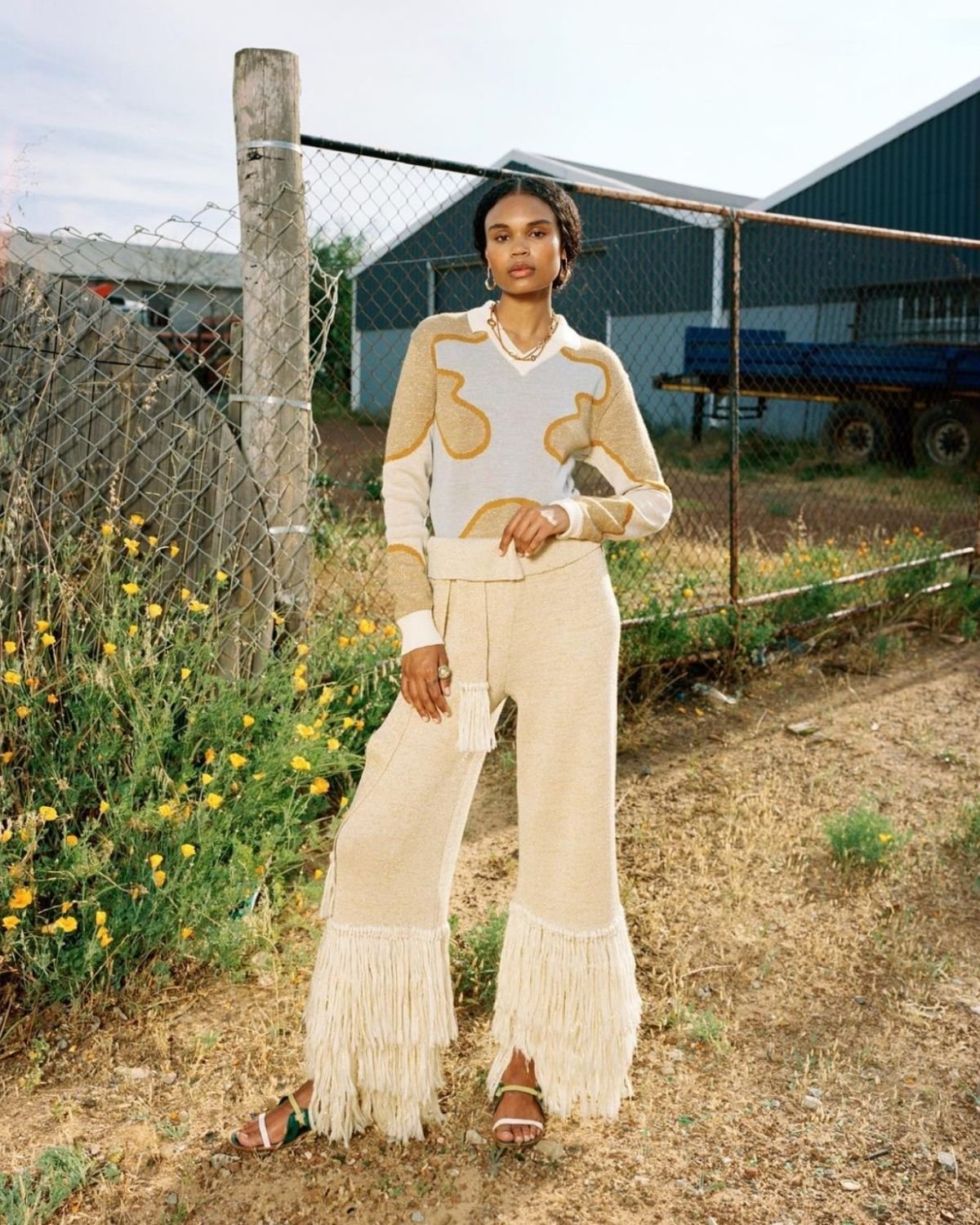Exploring the Surge of Cape Town Sustainable Fashion Brands
Exploring the Surge of Cape Town Sustainable Fashion Brands
Blog Article
Remain Ahead of the Curve by Discovering Cutting-edge Fashion Trends
In a market as dynamic as style, remaining in advance involves greater than just adhering to present trends-- it demands an exploration of development. Smart fabrics, for instance, are changing garments into functional masterpieces, while 3D printing is transforming layout procedures with its customizable, waste-reducing capacities. As sustainability becomes a keystone, innovations like environmentally friendly products and circular fashion practices are reshaping environmental responsibility - Cape Town Sustainable Fashion. In addition, the convergence of technology and fashion declares a brand-new era of consumer involvement. Exactly how, after that, can these emerging trends redefine the future of fashion, and what implications do they hold for brand names looking for to flourish in this evolving landscape?

Accepting Smart Textiles
In current years, the apparel industry has witnessed a transformative change with the combination of clever textiles, a sophisticated advancement that mixes innovation with material. This development stands for not just a combination of appearances and functionality but additionally a considerable jump in the direction of sustainability and personalization in style. Smart fabrics, also referred to as e-textiles, installed advanced electronic devices such as sensing units and conductive threads within the textile, enabling garments to interact with the wearer or the environment.
These fabrics are developed to keep an eye on physiological parameters, such as heart price or body temperature level, offering real-time health analytics. Past health applications, clever fabrics are additionally being used for flexible clothes, which can alter shade or pattern in response to environmental stimulations, thus supplying a vibrant fashion experience.
Moreover, the development of energy-harvesting fabrics that create power from motion or sunlight is leading the way for self-dependent wearable modern technology. This innovation is appealing to ecologically mindful customers and designers aiming to reduce the ecological impact of fashion. As research and development in this field breakthrough, smart textiles are expected to come to be progressively common, improving the landscape of modern fashion with their multifunctional capabilities.
The Surge of 3D Printing
Transforming the manufacturing landscape, 3D printing has emerged as a game-changer in the fashion market. This innovative modern technology has actually allowed developers to push the borders of imagination, producing complex and customized garments that were formerly unimaginable. By leveraging electronic design and additive manufacturing, 3D printing helps with the creation of intricate geometries and patterns, permitting designers to experiment with new textures and frameworks.
A remarkable advantage of 3D printing in fashion is its capacity to produce on-demand, decreasing waste and reducing inventory demands. This efficiency not just enhances production processes yet additionally enables fast prototyping, making it possible for developers to bring their visions to life in a much shorter timeframe. Moreover, 3D printing sustains modification somewhat unmatched by traditional approaches, offering one-of-a-kind layouts and individualized fits tailored to private consumer choices.
The surge of 3D printing has actually additionally democratized style, making it available to emerging developers who can now fabricate top notch pieces without significant monetary investment in conventional production facilities. As technology remains to development, the garment industry is poised to harness the complete potential of 3D printing, exploring brand-new products and methods that will certainly redefine how style is developed and produced.
Lasting Style Innovations
As the fashion business faces the pressing need for ecological responsibility, sustainable style technologies have actually arised at the forefront of transformative change. The growing understanding of ecological effect has actually sustained a shift towards more eco-conscious methods and products. Brands and designers are currently focusing on sustainability, integrating approaches that decrease waste and decrease carbon footprints.
One significant advancement is the rise of circular style, which emphasizes recycling and upcycling to prolong the lifecycle of garments. This approach not just reduces waste but additionally urges consumers to adopt a much more mindful method to garments consumption.
An additional advancement lies in the fostering of innovative dyeing strategies that use waterless processes or natural dyes, thereby lowering the huge quantities of water and chemicals typically made use of in textile dyeing. Moreover, improvements in biotechnology have resulted in the production of lab-grown leather and materials, providing cruelty-free and eco-friendly alternatives to conventional materials. Through these introducing efforts, the garment industry is making significant strides towards a much more sustainable future.

Tech-Integrated Garments
Tech-integrated apparel stands for a revolutionary blend of style and innovation, reshaping how people connect with their clothing. This ingenious domain is noted by the incorporation of clever textiles and ingrained digital parts, enhancing both capability and aesthetic allure. From fitness trackers installed in sportswear to warmed jackets regulated through mobile phone apps, tech-integrated garments supplies customers unmatched benefit and flexibility.
Pioneering brands are driving this pattern, concentrating on developing garments that react to environmental stimuli or individual commands. As an example, some garments can transform color or pattern in reaction to temperature level shifts, while others include biometric sensing units to check wellness metrics like heart price or stress and anxiety levels. The smooth combination of modern technology into textiles additionally includes environmental sustainability, with efforts to establish self-cleaning textiles or garments that get used to climate condition, therefore lessening the requirement for several layers.
Furthermore, the introduction of wearable modern technology is not just restricted to clothing but reaches accessories like watches and glasses, further expanding the extent of tech-integrated style. As the sector remains to introduce, the potential for modification try this website and personalization in apparel grows, offering consumers one-of-a-kind, tech-enhanced fashion experiences that provide to their private needs and choices.
Future of Virtual Fashion
Over the last few years, the future of online fashion has actually arised as a transformative pressure within the industry, leveraging improvements in electronic innovation to redefine exactly how fashion is produced, experienced, and taken in. By incorporating augmented truth (AR), virtual truth (VR), and 3D style devices, designers can now craft immersive and interactive experiences that transcend typical style boundaries. Digital fashion permits the development of garments that exist entirely in electronic atmospheres, providing countless possibilities for innovation without the restrictions of physical manufacturing.
This electronic change not only offers possibilities for innovative expression however also addresses sustainability worries integral in typical fashion techniques. Cape Town Sustainable Fashion. By removing the need for physical sources, virtual style lowers waste and decreases carbon footprints. Moreover, the increase of digital fashion aligns with the raising consumer demand for personalized and distinct experiences, as digital garments can be customized and customized to specific preferences effortlessly

Verdict
The style sector's future lies in the combination of lasting methods and ingenious technologies. Online fashion is poised to redefine consumer interactions.
In current years, the style market has actually experienced a transformative change with the assimilation of wise fabrics, an innovative technology that mixes innovation with material.As the style sector grapples with the pressing requirement for ecological weblink responsibility, lasting style innovations have arised at the leading edge of transformative adjustment.In recent years, the future of virtual fashion has arised as a transformative pressure within the market, leveraging improvements in electronic modern technology to redefine just how style is created, experienced, and consumed. The rise of digital fashion straightens with the raising consumer need for personalized and one-of-a-kind experiences, as online garments can be customized and customized to private choices with ease.
The fashion industry's future lies in the integration of sustainable techniques and cutting-edge find more information innovations.
Report this page